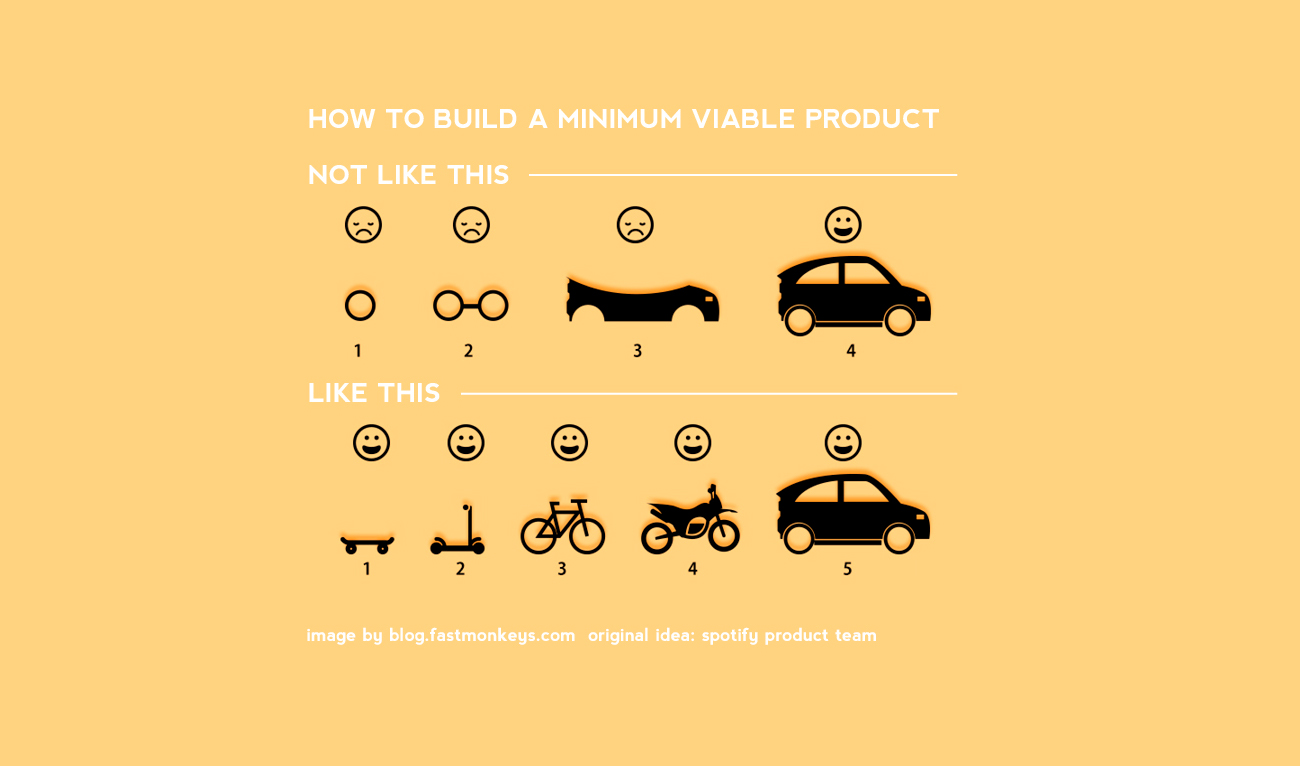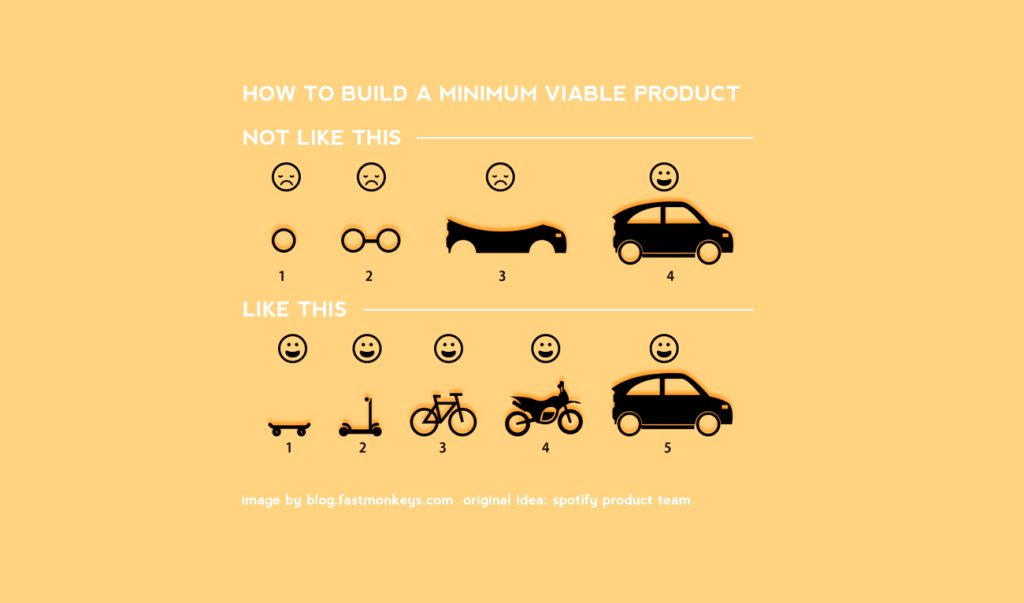
An Example Of The Minimum Viable Product Approach
I launched a book in just 10 weeks over the summer; it was a small eBook about mobile design called Mobile Design Book.
It was by no means easy, but from that process itself, I managed to take away a bunch of lessons that could serve as tips for others. It’s tricky to launch anything, especially quickly.
However, following simple steps can make the whole process significantly easier. Below, I’ve gathered three key steps that helped me launch my book quickly; I hope they will also serve as good advice for you.
What Makes for a Good MVP?
If you are unfamiliar with the concept of an MVP (minimum viable product), plenty of online articles help you explain this concept. The basic idea is to develop the simplest form of your product that still functions. Recently, there has been a great amount of debate on what an MVP should be, as oftentimes people and companies get it wrong. My favorite example of depicting what makes for a good versus bad MVP can be seen in the image below.

What you are aiming to create is something usable but small. When you provide your users or audience with a skateboard, they can still get from A to B. If you provide them with only part of a car, they can’t do anything with it; to them, it’s useless. As you launch your product – no matter what – make sure it can serve your users. Of course, a skateboard is not as good as a car – it’s slower and less comfortable – but nevertheless, it allows for transportation while a sole wheel cannot.
If you want to read about MVPs in greater depth, check out “Creating our minimum viable product“.
iPhone Only Book Examples
I cut down a lot of content to ensure my book was publishable in 10 weeks. The goal of the book was to provide educational publishing on mobile design.
There isn’t much out there on this topic, actually, and I felt compelled to try to fill the void.
There were many other ideas, like creating a blog and making the book big where including Android examples and tablet ones. Instead, I’ve settled on a small version of the book with only less than 40 iPhone examples. It was doable within 10 weeks.
Create a Plan
It doesn’t matter what you’re launching or how create your product may be, without a plan of action you will be doomed. If you figured out what you are creating – the MVP of course – it’s time to plan out how you’re going to execute it.
If you have a team to work with, you could utilize various techniques, like Agile. Nevertheless, the first thing you will need to plan is a rough outline of when things are happening.
How quickly are you launching your product? What will you test it? When will the development wrap up? When will the designs be sketched out? Who will be working on what?
If it’s just you doing the whole process the planing will be different if you were working with freelancers or were part of a team. Plan it all out so you know, day by day, whether or not you are on track to launching your product quickly.

Without setting up a 10-week plan, god knows how much longer till the book would have been written. The idea of the book started around December 2013 or January 2014. I’ve got the idea to do it with my co-author, Tomas Laurinavicius. He and I met weekly for about a month, making aimless progress towards the book.
Eventually, we fell off the tracks, and we stopped the project till about May. Then, I told him we would launch this one and for all in 10 weeks. We sat down and figured out a rough plan for those 10 weeks. The next day we made more progress than we have in months, literally.
Marketing Is Not to Be Forgotten
It’s significantly harder to launch a product when you don’t have an audience. That was the case for me. I’ve never launched anything before; I didn’t have an audience for this book before deciding to write it. Marketing was integrated into my 10-week launch plan. This way, once the book was launched, it would be welcomed by at least a few souls who wanted to read it. It was so tough to do this, but it was well worth it because taking some time to market the product while it was being made helped its launch.
Stick to Your Deadlines
The biggest factor in making sure you’ll succeed in launching a product quickly is your set deadlines. While you’re enacting upon your plan things will come up left and right; it’s the nature of product development. Whatever you do make sure you won’t blow your deadlines.
Use your plan to keep your scope of work in check; new ideas will come up too and they will derail you from creating your originally set MVP. If the ideas you or your team up up with are great and will provide value later on, make a note of it. There is nothing wrong with envisioning what your product could be like later as long as you don’t try to compromise your MVP or your current plan.
Focus on your next iteration of your product – like turning your skateboard into a scooter for later version not this one. You your deadlines to your advantage!

Have you heard before that great and successful people have to say no to a lot of opportunities so they can say yes on the great ones? You at least have now. It’s true. If sticking to your deadlines could be hard for you announce them to the public; it densest matter who will listen to this announcement, it matters that you’ve publicly declared it. This will keep you in check for sure.
Creating Small Is Still Hard
Like I’ve mentioned before, there were a lot of ideas that were cut out in order to make Mobile Design Book happen.
Some great things came up while the book was being made, but they had to be turned down. There was no way that the 10-week deadline allowed for it; it was hard to make it as it was, but adding more was just a sure way to blow it. The book was going to originally have 25 topics with 2 examples each making for a total of 50 apps. Having 50 apps to write about proved to be difficult so we ended up cutting it down to, I believe, 17 topics which makes for 36 examples.
In Conclusion
I hope that these three tips will come in handy whenever you’re launching your next product and want to do so quickly. I feel that those three main components are what truly made Mobile Design Book happen. Without them, who knows if the book would still be just an idea almost a year later after it was talked about by Tomas and I.